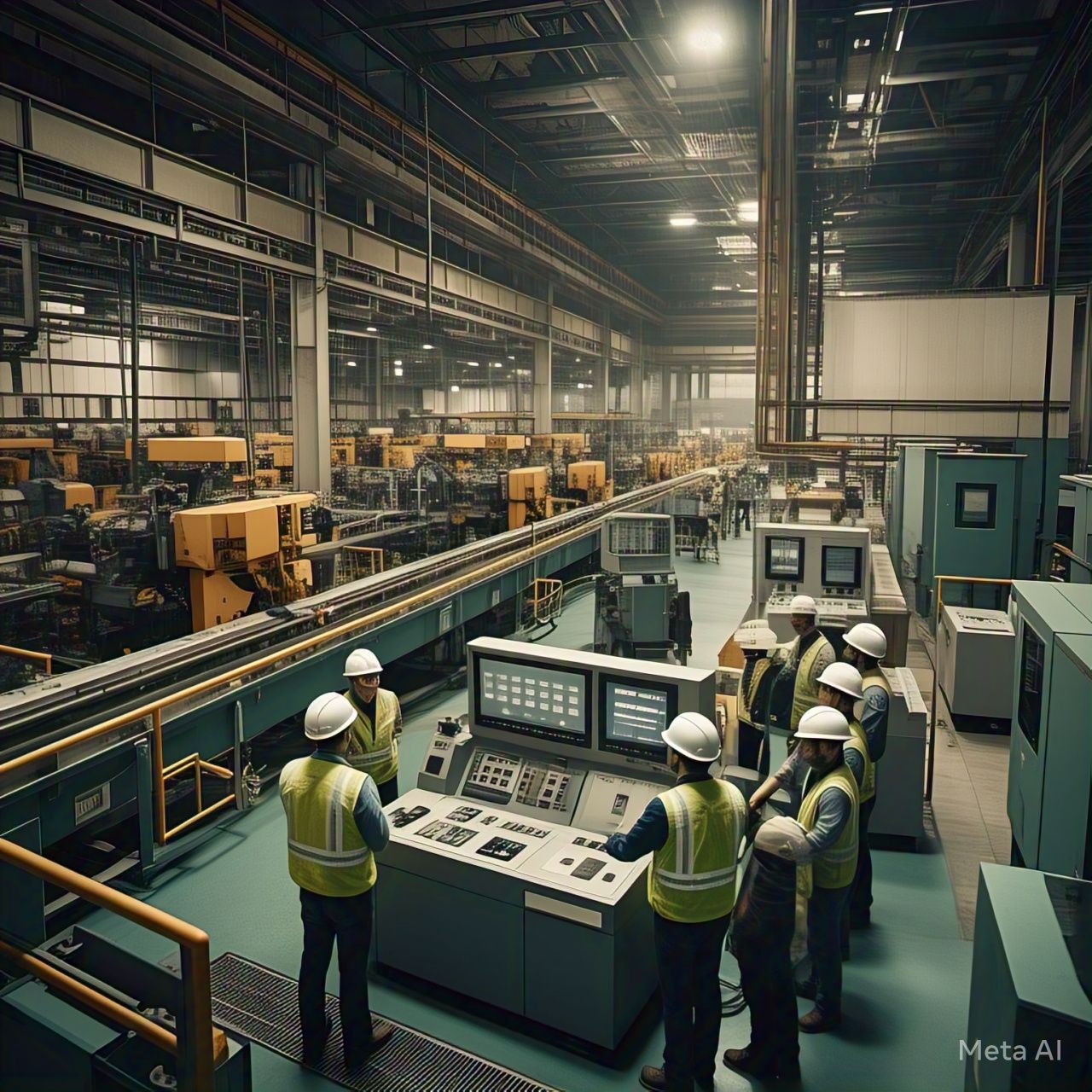Table of Contents
- Introduction
- Understanding IoT in Industrial Automation
- Benefits of IoT in Industrial Automation
- Enhanced Efficiency and Productivity
- Predictive Maintenance
- Improved Safety Standards
- Cost Savings
- Real-Time Data Monitoring
- Risks and Challenges of IoT in Industrial Automation
- Cybersecurity Threats
- Data Privacy Concerns
- Integration with Legacy Systems
- High Initial Costs
- Reliability and Downtime Risks
- Future Trends of IoT in Industrial Automation
- Conclusion
- FAQs
1. Introduction
The Internet of Things (IoT) is revolutionizing industrial automation by enabling smarter, more efficient, and data-driven manufacturing processes. From predictive maintenance to real-time monitoring, IoT is enhancing productivity, reducing costs, and improving operational efficiency. However, this transformation also comes with challenges, particularly in cybersecurity and system integration. This article explores the benefits, risks, and future trends of IoT in industrial automation.
2. Understanding IoT in Industrial Automation
IoT in industrial automation refers to the integration of smart sensors, cloud computing, and artificial intelligence (AI) to streamline manufacturing operations. These connected devices collect and analyze data in real time, facilitating predictive maintenance, optimizing supply chains, and improving overall factory performance. Examples include automated robotic arms, real-time asset tracking, and smart energy management systems.
3. Benefits of IoT in Industrial Automation
3.1 Enhanced Efficiency and Productivity
IoT-driven automation optimizes industrial operations by reducing manual interventions, improving precision, and minimizing errors. Machines can communicate seamlessly, enabling faster decision-making and streamlined production workflows.
3.2 Predictive Maintenance
IoT sensors detect anomalies in industrial machinery, predicting potential failures before they occur. This minimizes unexpected breakdowns, reduces downtime, and extends equipment lifespan, saving significant costs on repairs.
3.3 Improved Safety Standards
IoT technology improves workplace safety by deploying smart sensors, AI-powered surveillance, and automated emergency response systems. Wearable IoT devices for employees help monitor hazardous environments and prevent accidents.
3.4 Cost Savings
By enhancing operational efficiency, reducing energy consumption, and optimizing supply chains, IoT significantly cuts production costs. Manufacturers can streamline inventory management and prevent overstocking or understocking issues.
3.5 Real-Time Data Monitoring
IoT enables continuous monitoring of industrial processes, allowing manufacturers to make data-driven decisions. This ensures quality control, faster troubleshooting, and adaptive process optimization.
4. Risks and Challenges of IoT in Industrial Automation
4.1 Cybersecurity Threats
As industrial systems become interconnected, they become vulnerable to cyberattacks, ransomware, and data breaches. A single compromised device can jeopardize an entire manufacturing network.
4.2 Data Privacy Concerns
Massive amounts of data collected by IoT devices pose privacy challenges. Ensuring secure data storage, encryption, and compliance with data protection regulations is crucial.
4.3 Integration with Legacy Systems
Many industries still rely on traditional machinery that lacks IoT compatibility. Integrating IoT with legacy systems requires extensive modifications, making it a complex and costly process.
4.4 High Initial Costs
Although IoT reduces operational costs in the long run, the initial investment in sensors, cloud infrastructure, and AI-driven software can be expensive for small and medium-sized enterprises (SMEs).
4.5 Reliability and Downtime Risks
IoT networks depend on constant connectivity and power supply. Any disruption in internet connectivity or system failure can halt industrial operations, leading to production losses.
5. Future Trends of IoT in Industrial Automation
- AI-Integrated IoT: Combining IoT with AI for predictive analytics and automation.
- 5G Connectivity: Faster, more reliable network connections for real-time industrial automation.
- Digital Twins: Virtual simulations of physical assets to enhance performance monitoring.
- Edge Computing: Processing data closer to the source to reduce latency and enhance security.
- Blockchain for Security: Enhancing data integrity and security in industrial IoT networks.
6. Conclusion
IoT is revolutionizing industrial automation by enabling smart, data-driven, and efficient manufacturing processes. While it offers numerous benefits such as predictive maintenance, cost savings, and enhanced productivity, it also presents challenges related to cybersecurity, integration, and high initial costs. As technology continues to advance, industries must implement robust security measures and strategic planning to maximize the benefits of IoT-driven automation.
7. FAQs
7.1 How does IoT improve industrial automation?
IoT enhances industrial automation by enabling real-time monitoring, predictive maintenance, and improved process efficiency, reducing downtime and operational costs.
7.2 What are the biggest risks of IoT in industrial automation?
The key risks include cybersecurity threats, data privacy concerns, integration challenges with legacy systems, and high initial costs.
7.3 Can IoT reduce production costs in industries?
Yes, IoT helps industries cut costs by optimizing energy consumption, reducing machine downtime, and improving supply chain management.
7.4 What industries benefit the most from IoT automation?
Industries such as manufacturing, logistics, healthcare, energy, and automotive benefit significantly from IoT-driven automation.
7.5 How can industries secure IoT networks?
Industries should implement strong encryption, multi-factor authentication, AI-driven threat detection, and regular security audits to protect IoT networks from cyber threats.
Table: Comparison of Traditional Automation vs. IoT-Driven Automation
| Feature | Traditional Automation | IoT-Driven Automation |
|---|---|---|
| Monitoring | Manual & Periodic | Real-Time & Continuous |
| Maintenance | Reactive & Scheduled | Predictive & Proactive |
| Efficiency | Limited Optimization | Data-Driven Optimization |
| Downtime | High Due to Unexpected Failures | Reduced Through Predictive Maintenance |
| Security | Isolated Systems, Less Risk | Higher Connectivity, Increased Cybersecurity Risks |
IoT is reshaping industrial automation, offering enhanced efficiency, productivity, and cost savings. However, addressing security challenges and implementation costs remains critical for its successful adoption in modern industries.




